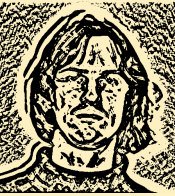
















|
PhD thesisPhD thesis of Petr Klapetek, defended 21. 1. 2004. Both thesis and extended abstract can be downloaded here (see below).
Abstract Thesis basically consist of two parts dealing with two important problems of the imperfect surfaces and films characterization. First, atomic force microscopy study of imperfect boundnaries is investigated, and results of this method on many different surfaces of thin films used in practice are presented. Namely, a nanometric roughness is studied by means of the statistical methods that enable us to determine wide range of statistical properties of the rough surfaces. In literature, there are many articles concerning atomic force microscopy study of various material surfaces including the ones studying their nanometric roughness. However, almost all the authors are limiting the statistical processing only to one or two most widely used statistical quantities (e.g. root mean square deviation of the heights). More complete characterization of the surface roughness, at least involving the measure of the lateral properties of the roughness (e.g. autocorrelation length) is not performed very frequently in literature. In this work, this more wide description of the statistical properties of the rough surfaces, including their angular, grain and fractal properties, is performed. The effect of the AFM related errors on those properties determination is discussed. In the second part, spectroscopic digital reflectometry is used for characterizing thin films nonuniform in thickness and optical parameters. For these films the thickness or refractive index change along the area of these films. Therefore the films cannot be analyzed by means of the conventional spectroscopic reflectometry or ellipsometry as the uniform ones. Spectroscopic digital reflectometry is using a special experimental arrangement with the CCD camera as the detector enabling us to determine the local spectral dependence of reflectivity at each point of the sample. The aim of this work is not to develop the instrument itself (the instrument was developed by group of M. Ohl\'{i}dal), but to develop the data processing related with the evaluation of the CCD images obtained using this method. Here again, the development of processing procedures is followed by results obtained while measuring real samples of nonuniform thin films. |